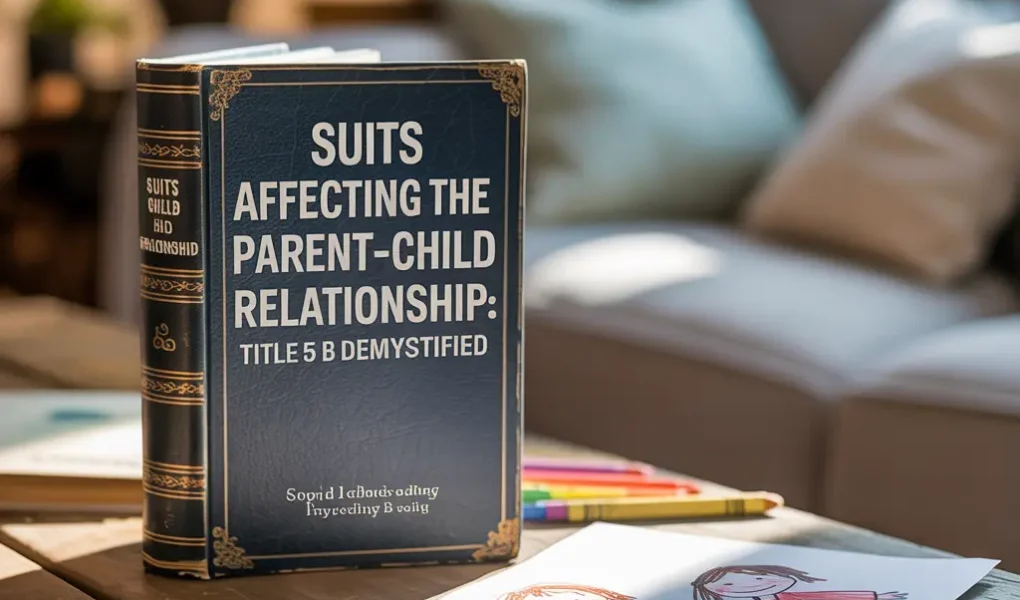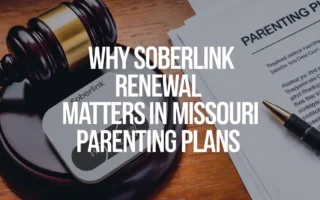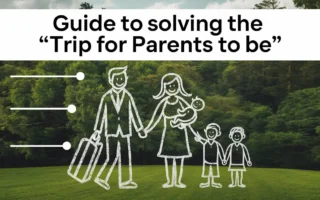Family law can feel confusing. It becomes even more complicated when children are involved. In Texas, many cases involving parents and children fall under something called Title 5, Subtitle B. This part of the law deals with Suits Affecting the Parent-Child Relationship, or SAPCR. If you are a parent, guardian, or concerned party, this guide will help you understand what these suits are and how they work.
What Is a SAPCR (Suit Affecting the Parent-Child Relationship)?
A SAPCR is a legal case that decides the rights and duties of parents. These suits also determine custody, visitation, and child support. In short, if you want the court to make decisions about a child, you usually file a SAPCR.
Where Does Title 5 Subtitle B Fit In?
Title 5 Subtitle B is a section of the Texas Family Code. It covers all the rules and procedures for SAPCR cases. The law uses this section to protect the best interest of the child. It provides the structure for courts to resolve disputes between parents, guardians, and other caregivers.
Who Can File a SAPCR?
Several people can file a SAPCR in court:
-
A biological or adoptive parent
-
A legal guardian
-
A person with court-ordered custody
-
A person who has lived with the child and taken care of them for at least six months
-
A government agency (like Child Protective Services)
These suits are not just for married couples. Unmarried parents, grandparents, and even close family friends can sometimes file them.
Why Do People File SAPCR Cases?
People file SAPCR cases for many reasons:
-
To ask for custody of a child
-
To get visitation rights
-
To establish or change child support
-
To terminate or restrict a parent’s rights
-
To adopt a child
-
To remove a child from a harmful situation
In all these situations, the court considers the child’s safety and well-being first.
What Does the Court Decide in SAPCR Cases?
The court uses SAPCR cases to make several key decisions:
Custody (Conservatorship)
The court assigns custody to one or both parents. Texas uses the term “conservator” instead of “custodian.” A parent can be a sole managing conservator or a joint managing conservator.
Visitation (Possession and Access)
The court sets a schedule for the child to visit the non-custodial parent. This schedule aims to provide consistency and stability for the child.
Child Support
One parent may be ordered to pay child support. The court uses state guidelines to decide how much should be paid.
Parental Rights and Duties
The court explains what each parent can and cannot do. This includes decisions about education, medical care, and religion.
The Best Interest of the Child: The Core Principle
Every decision made under Title 5 Subtitle B focuses on one thing: the best interest of the child. The court looks at several factors:
-
The child’s physical and emotional needs
-
The parent’s ability to care for the child
-
The stability of the home environment
-
Any history of abuse or neglect
-
The child’s relationship with each parent
Even if both parents want custody, the court will choose the arrangement that best supports the child’s safety and development.
What Happens During a SAPCR Case?
Here is a simple breakdown of how a SAPCR case usually proceeds:
Filing the Petition
The person who wants to open the case files a petition in family court. This petition lists the names of all parties involved and the type of orders requested.
Serving the Other Party
The other parent or legal guardian must receive a copy of the petition. This is called “serving” the papers.
Temporary Orders Hearing
The court may hold a hearing to set temporary rules for custody and support. These rules last until the final hearing.
Mediation or Negotiation
Parents often meet with a mediator to try and settle outside of court. If they agree, the court approves the agreement.
Final Hearing or Trial
If no agreement is reached, the case goes to trial. A judge (or sometimes a jury) listens to both sides and makes final decisions.
What if You Already Have a SAPCR Order but Want to Change It?
Sometimes, things change. A parent might move, lose a job, or become unsafe for the child. In these cases, you can file a modification suit.
To change an existing order, you must prove that:
-
The circumstances have materially and substantially changed, and
-
The new order is in the best interest of the child
What if a Parent Is Not Following the Court Order?
If a parent does not follow the SAPCR order, the other parent can file an enforcement case. The court can take several actions:
-
Issue fines
-
Order jail time for serious violations
-
Require make-up visitation time
-
Garnish wages for unpaid child support
The court takes violations seriously, especially if they harm the child.
What Rights Do Parents Have in a SAPCR Case?
Every parent has certain rights during the process:
-
The right to receive legal notice of the case
-
The right to hire a lawyer
-
The right to attend all hearings
-
The right to present evidence and call witnesses
-
The right to appeal the decision (in some cases)
Even if you are not the child’s biological parent, you may still have rights if you have raised or cared for the child.
How Long Does a SAPCR Case Take?
The length of the case depends on several factors:
-
Whether both parties agree or disagree
-
The court’s schedule
-
The complexity of the case
-
Whether the case involves child abuse, neglect, or drug use
Some cases finish in a few months, while others can take over a year.
Do You Need a Lawyer?
You are not required to hire a lawyer, but it is highly recommended. Family law is complicated, and your child’s future is at stake. A lawyer can help you:
-
Understand your rights
-
File the correct forms
-
Represent you in court
-
Negotiate fair agreements
Many legal aid services also provide help to parents who cannot afford a lawyer.
Special Cases Under Title 5 Subtitle B
Certain SAPCR cases involve unique situations. These include:
Termination of Parental Rights
This is the most serious SAPCR case. It ends a parent’s legal rights. It is usually filed when the parent is abusive, neglectful, or has abandoned the child.
Grandparent or Non-Parent Rights
Sometimes, grandparents or other relatives ask for custody or visitation. The court allows this only if it benefits the child and meets legal requirements.
Adoption
Adoption cases often begin with a SAPCR. Before a child can be adopted, the court must end the rights of the biological parents.
Final Thoughts: Protecting Children Through Clear Legal Guidance
Title 5 Subtitle B plays a critical role in Texas family law. It ensures that children remain safe, supported, and loved. If you are going through a SAPCR case, remember that the law exists to serve the best interest of your child. By understanding the process, following the rules, and putting your child first, you can move through the legal system with confidence and clarity.
Resources and Help
If you need more information or legal help, here are some resources:
-
TexasLawHelp.org
-
Legal Aid of Northwest Texas
-
Texas Family Code (Title 5 Subtitle B)
-
Local Family Courts and County Clerks
Always consult a lawyer for serious legal matters. Protecting your rights—and your child’s well-being—is worth it.




